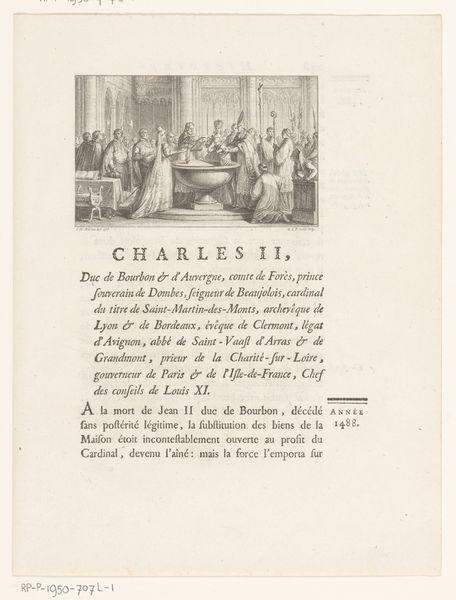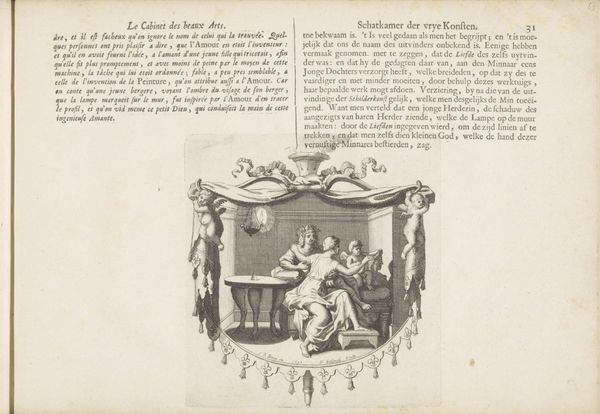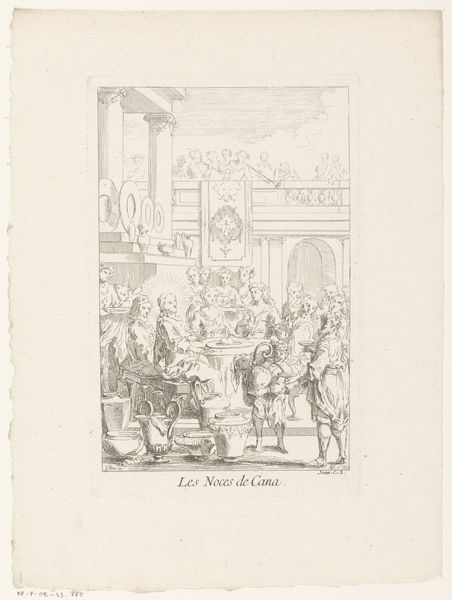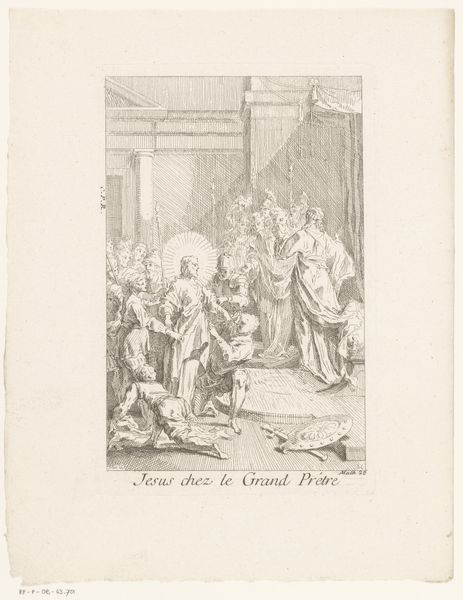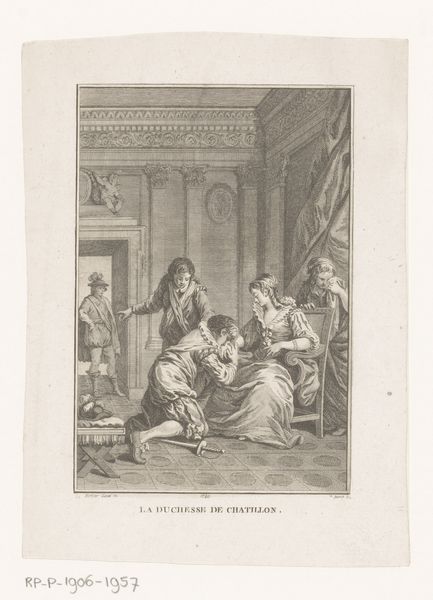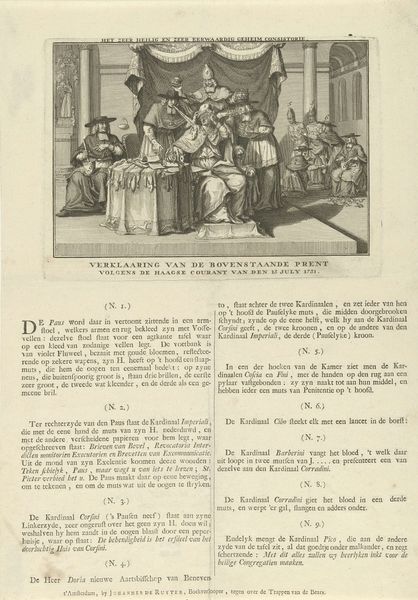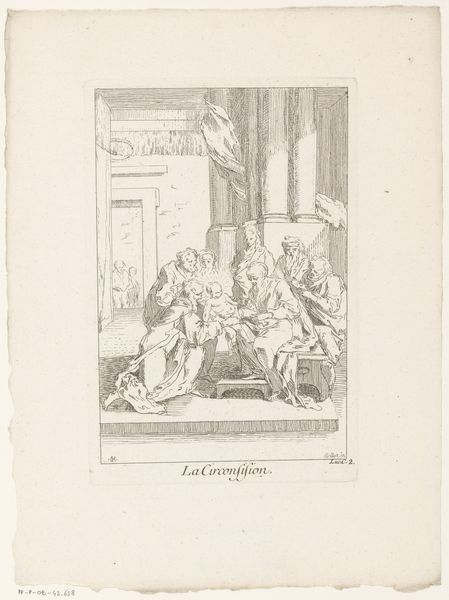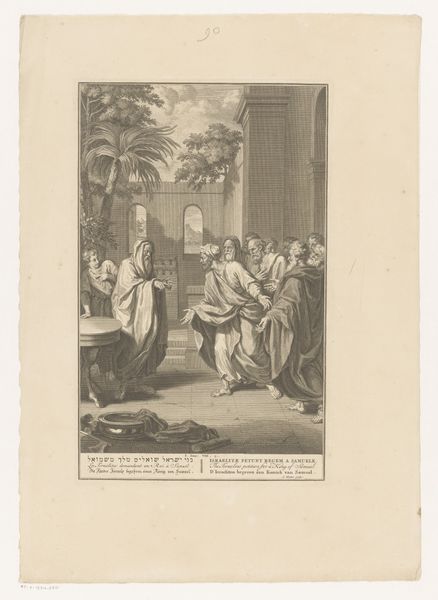
Dimensions: height 251 mm, width 192 mm
Copyright: Rijks Museum: Open Domain
Curator: Here we have Benoit Louis Prevost's "Lodewijk II van Bourbon omringd door edelen," created in 1772. It’s an engraving, a print meant for wide distribution. Editor: Immediately, the mood strikes me. Despite the grand setting and numerous figures, there’s an underlying sense of fragility. Look at the almost theatrical posing of the figures. Curator: Absolutely. Contextually, remember the 18th century was a hotbed for disseminating political ideologies via prints. This image aimed to portray Lodewijk II within a narrative of power, albeit filtered through the lens of the engraver and the desires of his patron. How did social and institutional power support the Bourbon monarchy? Editor: The composition also speaks volumes. It positions Lodewijk as a central figure, bathed in implied light, while surrounding nobles frame him. But notice their expressions; are they reverent, plotting, or indifferent? This image opens possibilities for discourse about representation and power. It pushes you to engage with the artwork's intersectional themes and hidden ideologies. The gaze of these noblemen, for example. Curator: It’s a performance, isn’t it? Lodewijk embodies legitimate leadership, surrounded by symbols of institutional approval – the council table, flags, the kneeling figure enacting submission. I am drawn to this staged display, to explore questions around court politics and representation in the years leading up to the Revolution. Editor: Yet that 'performance' can be disrupted. Applying feminist and queer readings, for example, complicates the portrait of Bourbon rule it tries to convey. How about if we explore the themes of the painting with viewers more attuned to ideas about authority? Curator: Indeed. And through that conversation, consider the print's role within the public sphere, creating narratives that either solidify or challenge power dynamics of the late 18th Century. It all becomes an incredibly interesting point for discussion. Editor: For sure. This is more than just historical documentation, or a neutral portrayal of a key political figure. It shows how even within the detailed rendering of historical figures, an image can open doors into a fascinatingly layered intersection of the historical and the contemporary, urging critical inspection of representation itself.
Comments
No comments
Be the first to comment and join the conversation on the ultimate creative platform.
